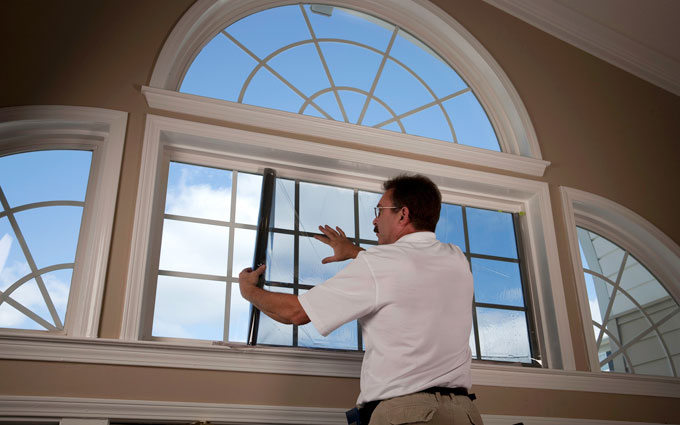Lately there is a lot of speculation that spray foam insulation is not as inert as once thought and in fact, SPF may continue to off gas for many years. The EPA has also voiced their concern about the need for further research on the short and long term safety of SPF in residential use.
We are in contact with 30 other families in the USA and Canada who may be suffering from symptoms related to their SPF home (NOTE: schools and offices are using it too).
Some families have moved out of their homes. Other families have removed roof decks and/or walls of SPF in hopes of reducing the chemicals and symptoms experienced in the home. Some families have no choice other than to remain in their home and rely on mechanical ventilation/filtration to help ease the chemical burden and symptoms, but find little relief.
After nearly a year of research, ventilation, lots of lab testing (chamber and air samples), and expert opinions, our family has begun tedious process of removing our SPF (roof deck and wall cavities). The removal is being performed by a local remediation company (the company has removed SPF in homes prior because of mold and moisture issues.
A detailed protocol created by our Certified Industrial Hygienist (other credentials include CSE, CIEC, CEICC, CIAQP, CIAQC) whom has experience (20+ yrs.) with isocyanates (Side A of the two part foam) is being followed to ensure safe removal (dust created from breaking the foam is a respiratory and dermal hazard).
We are hopeful that removal of the SPF along with soda blasting will remove and neutralize the chemicals associated with the application of the SPF. We will do more testing after remediation is complete to ensure a safe environment prior to resuming to build
According to the EPA the SPF should be cured (inert) and safe for re-entry 23-72 hrs after install. According to SPF companies, there should be no odor or off gassing after it is cured.
Our home experienced something much different; a chemical smell has lingered and when we entered the home we experienced respiratory issues, headache, flu aches, muscle aches, throat, eye irritation and chest pain. On warm days, the smell and symptoms were more severe. Some visitors experienced the same symptoms while others do not. There is a varying degree of threshold levels, but almost everyone, after prolonged periods complain of eye, throat irritation.
A lot of lab work has been completed by a well known leader in product testing. Our chamber and air tests show a long list of chemicals that at even low levels, chronic exposure to most of the captured chemicals in our home will undoubtedly cause health issues after little or prolonged exposure. Frighteningly, our chemical profile from both the chamber and air testing mimics most of the other homes experiencing the same complaints with the SPF.
Is this all a coincidence that the same chemicals are found in homes with spray foam and the owners are experiencing the same symptoms?
Today we are much more sensitive to things that contain isocyanates and flame retardants. Renting a car, walking into REI, IKEA, and HomeDepot can cause eye irritation, burning throat and chest congestion. Even running on a refinished track or wearing a wetsuit can evoke our symptoms.
Other SPF homeowners have had severe reactions and illness thought to be associated with the chemicals from the SPF. Children of some of these SPF homes develop a chronic cough and asthma like breathing. Chronic low grade fever and autoimmune responses have also been observed. Muscle aches and mental confusion and chest pain are other symptoms and can be seen during exposure and/or develop after being in an SPF home for long periods.
Our SPF manufacturer/supplier is very aware of our complaints and concerns (and the complaints of the other homeowners), but the company continues to deny any sort of problem with their product.
The contractor who installed the foam (in18 degree weather, with zero ventilation during install [two weeks], and allowed us and others to be in the home during installation) denies anything is wrong. Needless to say, like most of the other homeowners, we are left on our own to handle this because the science is not yet 'there'.
Do you have SPF insulation somewhere in your home (attic, wall cavities, crawl space)? Do you experience asthma like symptoms, chronic cough, headache, throat or eye irritation, nausea, skin rash, muscle aches, flu-ish, any new autoimmune issues since moving into or installing SPF?
If so, do your symptoms decrease when away from the home OR during times of lower temperatures?
Another issue has been seen in older SPF in homes. Have you had SPF insulation for 1-8 years and recently notice a new chemical odor or the above symptoms? A family we know has removed SPF from their home after 6 yrs. because in June 2011 it started to smell and the family had to move out because of their related symptoms. Test results indicate the foam is decomposing and releasing the same chemicals that we have in our relatively newly sprayed home.
I hope our situation is a random, but if it is not and other homeowners with SPF are experiencing similar symptoms, it is important that information is being gathered and awareness is spread.




Add new comment
To post a comment, you need to register for a BuildingGreen Basic membership (free) or login to your existing profile.